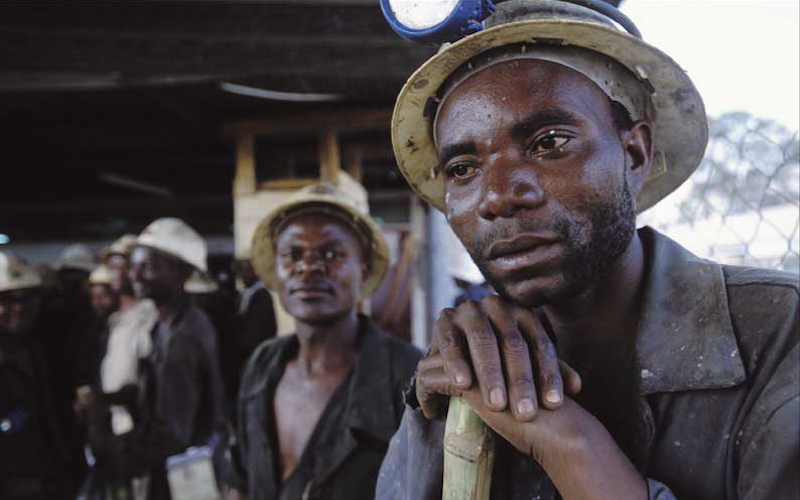
Zambia Elections Leave Copper Industry Exposed
One of southern Africa’s most stable countries, Zambia, will hold its second election in two years in August. Such stability is tenable. While alarmist voices ahead of African elections are routine, much depends on global industrial trends. The country is enduring hard lessons in the perils of over-dependence on a single commodity – copper.
Surrounded by eight countries, landlocked Zambia is the world’s ninth largest copper producer and Africa’s second after the Democratic Republic of Congo. Copper accounts for more than 70 percent of Zambia’s export earnings and the price has lingered near $2 per pound, down from $4.50 per pound in 2011. The global mining industry concedes that the price may remain low for years because of reduced demand from China, the world’s top consumer of copper that accounts for more than 40 percent of the metal’s global consumption. In the first quarter of 2015, total copper exports to China declined by about 27 percent, compared to 2014. Zambia quickly became dependent on China since the turn of the century as demand for mineral commodities grew. China, also a copper producer, announced a plan to cut production to support prices.
An election campaign is underway as Zambia’s economy tumbles, inflation exceeds 20 percent and the country struggles to save and create jobs. Numerous mines have shut down, with nearly 15,000 workers laid off and thousands more expecting to lose their jobs – with a ripple effect to other industries. Like many of its neighbors, Zambia suffers from widespread and frequent electricity shortages, which hamper economic growth and are a contributing factor to major job losses in the mining sector. Mining job losses, a major campaign issue last January, are expected to play an even larger part in this round.
For Zambia, real GDP growth has averaged 6.7 percent per year for the last decade and the rise in copper prices helped lure investments in the copper industry, spurring an economic boom. Seeking natural resources to feed its growing economy and population, China’s investment in Zambia soared above $2.5 billion in 2013, mostly in mining and metal refining in the northwest region known as the Copperbelt. Around 100,000 Chinese live in Zambia, and more than 500 Chinese companies have a footprint in agriculture, hospitals, pharmacies, retail trade, communication technologies, as well as road construction, mining and manufacturing projects.
However, strong economic growth and the country’s new lower middle-income country status have not translated into poverty reduction: 60 percent of Zambia’s population lives below the poverty line and 42 percent are considered to be in extreme poverty. A nation of nearly 16 million people, Zambia is one of the youngest countries in the world: the median age is 17 years. High unemployment levels, hovering around 25 percent for youth, run incongruously in comparison to Zambia’s robust GDP growth rate.
Mining brought other challenges. The country grapples with HIV, with the most recent data available indicating that over 12 percent of adults live with this disease, ranking Zambia among the top 10 countries with the highest rates in the world and severely burdening the country’s economic and human resources. Rising unemployment rates forced migration within the country as workers desperately sought new opportunities, and studies suggest that the movement of miners, including young men and seasonal workers, contributed to spreading the disease.
Waning demand for raw materials like copper is rattling commodity-dependent African countries after years of torrid growth, prompting some investors to reexamine the “Africa Rising” narrative that inflated gains in manufacturing and infrastructure. The International Monetary Fund has curtailed its outlook for the region’s growth this year to 4 percent from 4.3 percent. Last year, Nestlé SA slashed 15 percent of its workforce in 21 African countries. Following suit, Barclays PLC is considering selling a bulk of its business on the continent. Even more concerning is Glencore’s recent announcement of plans to suspend operations in Zambia,
The largest employer after the government, Glencore is the owner of over 70 percent of Mopani Copper mines, producing 26 percent of the nation’s copper output. Forced to deal with alarming holes in their budgets, Zambia, like other African nations, has borrowed heavily from international creditors in recent months to raise needed capital. Issuance of sovereign bonds since 2012 raised a whopping $3 billion for Zambia.
The economy is dangerously susceptible to commodity prices. In fact, economic research firm Fathom Consultancy ranks Zambia as the African economy most exposed to the commodities bust and China’s stagnation. Exports, a precious source of revenue, stood at just over $6 billion in 2015, down nearly $4 billion from the year before. The kwacha shed an astounding 47 percent of its value last year, making it one of the world’s worst-performing currencies in 2015.
With the economy wavering, President Edgar Lungu faces a major economic and social test at the polls. Diversifying the economy away from its dependence on copper should be a top priority.
Following the end of one-party rule in 1991, Zambia witnessed five peaceful transfers of presidential power and after the January 2015 election to replace President Michael Sata who died, US Assistant Secretary of State for Africa Linda Thomas-Greenfield praised Zambia, describing it as “a model of how to conduct elections and how to manage democracy.”
There is little evidence that the Zambian government has used the profits from the commodities boom to diversify its economy and shield it from cycles of boom and bust. Rather than investing in potential growth industries like tourism and agriculture, the government used revenue from copper to increase the salaries of civil servants. Reports of corruption in Zambia are widespread, increasing the costs of running businesses, distorting public expenditures and dissuading foreign investors. Ambiguous tax regimes and policies have cost Zambia dearly in foreign direct investment.
Hakainde Hichilema, leader of Zambia’s opposition party, the United Party for National Development, and presidential candidate, repeatedly points out that Zambia’s tax regime has changed three times over the past four years, damaging investor confidence. In an effort to deflect public debates from its dearth of fiscal and monetary discipline and exorbitant public squandering, Lungu’s government has blamed the economic challenges on external factors like poor rainfall and the slowing Chinese economy. Confronting a strong opposition and gloomy economy picture, Lungu’s chance to continue serving as president is threatened.

